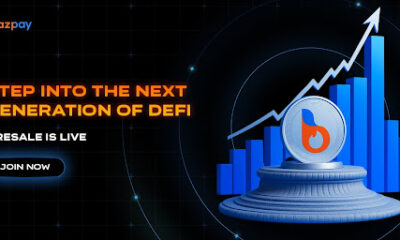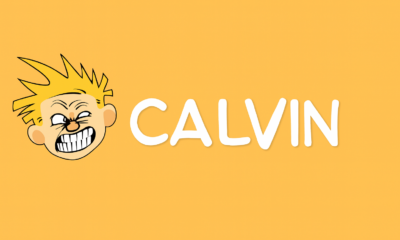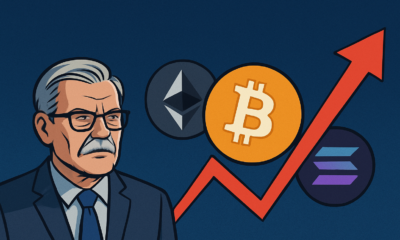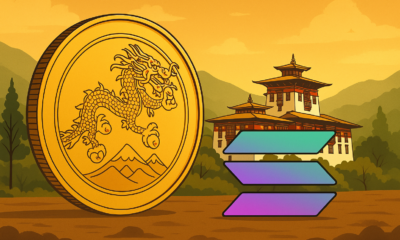Financial
Global smartphone sales plunged by 20% in Q1, due to Coronavirus

More blue numbers confirm what we are already aware of: Q1 2020 was tough for an already struggling smartphone division. Gartner’s latest report sets the global market at a 20.2% slide as compared to the same time last year, thanks in large portion to fallout from the Coronavirus pandemic.
Every single one of the global top-five productions saw significant drops for the quarter, save for Xiaomi, which saw a small uptick of 1.4%. The Chinese smartphone maker got a surprise bump, courtesy of international sales. Samsung and Huawei and Oppo all observed double-digit drop-offs at 22.7%, 27.3%, and 19.1%, while Apple declined 8.2%. Other companies consolidated for a sizable 24.2% loss for Q1.
The reasons are ones we’ve gone over several times before, nearly all about the global pandemic. Chief among them are comprehensive stay at home orders and general economic uncertainly. Issues with the worldwide supply chain have no doubt been a factor, as well, as Asia was the first to get hit with the virus.
All of this comes in addition to an already plateauing/declining smartphone market. Analysts had expected that the arrival of 5G would help stem the tide a bit — but, well, some stuff happened in there. Notably, Apple’s slide wasn’t as bad as it might have been thanks to a strong start to the year.
“If COVID-19 did not happen, the vendor would have likely seen its iPhone sales reached a record level in the quarter. Supply chain disruptions and declining consumer spending put a halt to this positive trend in February,” Gartner’s Annette Zimmermann said in a release. “Apple’s ability to serve clients via its online stores and its production returning to near normal levels at the end of March helped recover some of the early positive momenta.”
Overall, I suspect that recovery won’t be instantaneous for the market. The future of COVID-19 still feels largely uncertain as countries have begun the process of reopening, and a pricey investment always may not be in the cards for many who are struggling to make ends meet.
Blockchain
State Street and Galaxy to Launch Solana-Based Tokenized Fund, Marking a Major Milestone for Onchain Finance
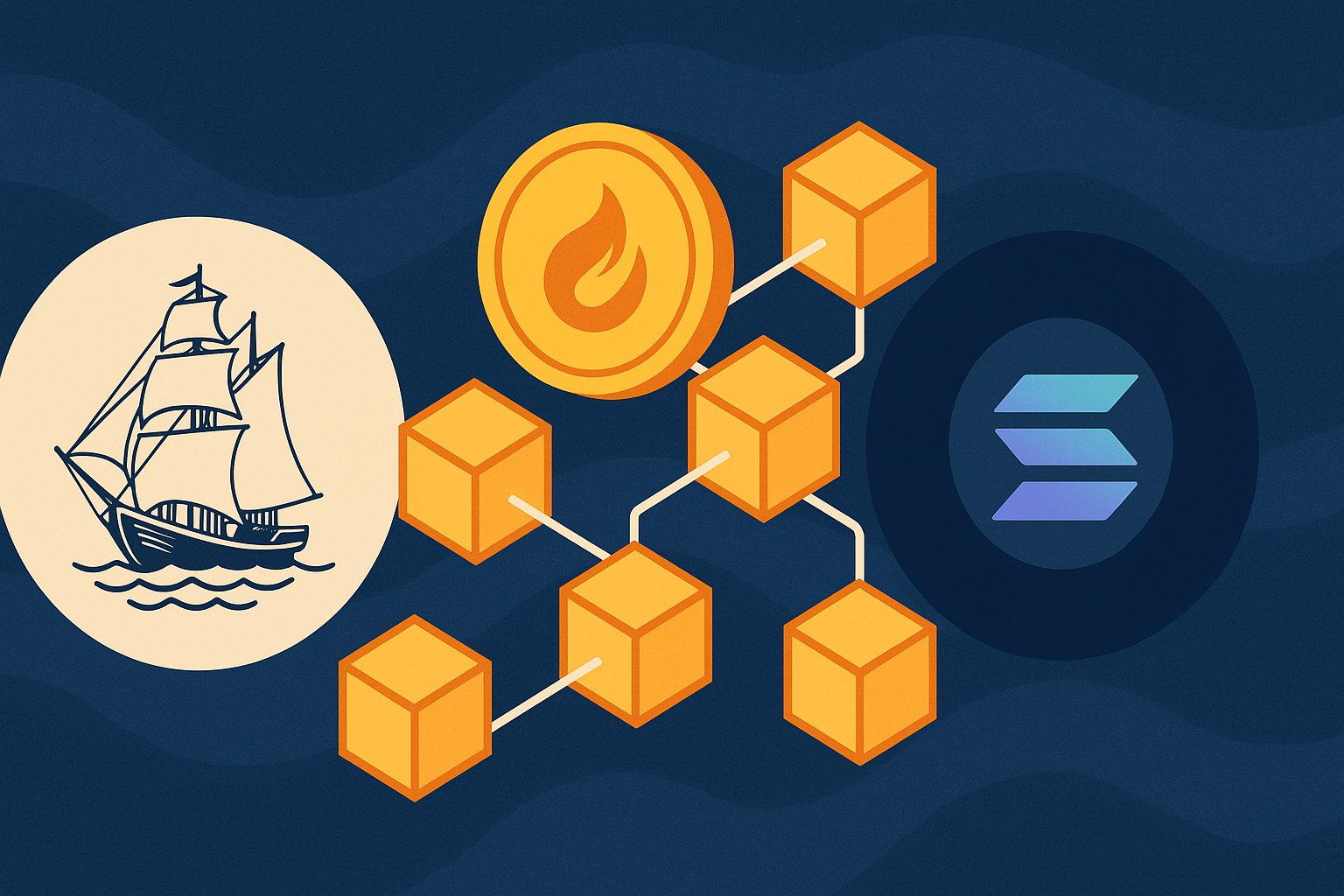
State Street and Galaxy Asset Management are taking tokenized finance to a new level with the announcement of the State Street Galaxy Onchain Liquidity Sweep Fund (SWEEP), set to launch on Solana in early 2026. The initiative represents a major leap for institutional blockchain adoption, marking the first time a global systemically important bank issues a product directly on Solana. Backed by Ondo Finance’s $200 million commitment, SWEEP aims to deliver an institutional-grade, fully onchain cash-management solution powered by PYUSD.
SWEEP Becomes the First Solana-Based Offering From a Global Bank
SWEEP will issue its initial tokens on Solana, chosen for its fast settlement times, low fees, and strong ecosystem for institutional-grade tokenization. The companies noted that this marks the first Solana-issued product from a top-tier global bank — a milestone that underscores how quickly the blockchain is becoming a preferred platform for real-world assets (RWAs).
While Solana will serve as the launch network, State Street and Galaxy confirmed that future expansions will support Stellar and Ethereum, with Chainlink infrastructure enabling secure cross-chain data and asset transfers.
24/7 Investor Flows Powered by PYUSD
Unlike traditional financial products limited by banking hours, SWEEP will operate around the clock, offering continuous subscription and redemption flows using PayPal’s PYUSD. This design provides institutions with a cash-like onchain product that preserves the liquidity and accessibility of traditional sweep accounts, but with blockchain-native transparency and automation.
Only Qualified Purchasers who meet regulatory standards will be eligible to invest in SWEEP.
State Street Bank and Trust Company will serve as the custodian for the fund’s underlying treasury assets, preserving the compliance and security institutions expect.
A New Era of Onchain Cash Management for Institutions
SWEEP is tailored specifically for institutions seeking to manage liquidity onchain without sacrificing the stability of traditional cash instruments. Kim Hochfeld, State Street’s global head of cash and digital assets, said the collaboration signals a major shift in how banks and crypto-native firms work together, allowing them to jointly push forward the evolution of onchain financial infrastructure.
Galaxy’s global head of asset management, Steve Kurz, emphasized that the product is designed to give digital-first investors a new operational liquidity tool, supported by Galaxy’s digital infrastructure for issuance and lifecycle management.
Ondo Strengthens Tokenization Momentum With $200M Investment
Ondo Finance President Ian De Bode highlighted that the firm’s $200 million seed commitment reinforces the accelerating convergence between traditional finance and blockchain-based markets. Tokenized funds like SWEEP, he noted, offer more efficient operating models and unlock new liquidity pathways for institutions.
State Street, Galaxy, and Ondo already share a history of collaboration, including partnerships around digital asset ETFs launched in 2024. SWEEP continues that trajectory while signaling growing confidence in tokenization as a core pillar of institutional finance.
A Transformative Step for Institutional Onchain Products
With SWEEP, State Street and Galaxy are positioning themselves at the forefront of tokenized asset innovation. By combining institutional-grade custody, blockchain-native liquidity, and a public network like Solana, the fund demonstrates how traditional finance and crypto infrastructure can now operate side by side — and in many cases, enhance one another.
As 2026 approaches, SWEEP could become one of the most influential institutional tokenization launches yet, paving the way for more real-world assets to move onchain.
Crypto
Massive SOL Transfer: Whale Moves $229 Million to Coinbase Institutional in a Major Crypto Shift
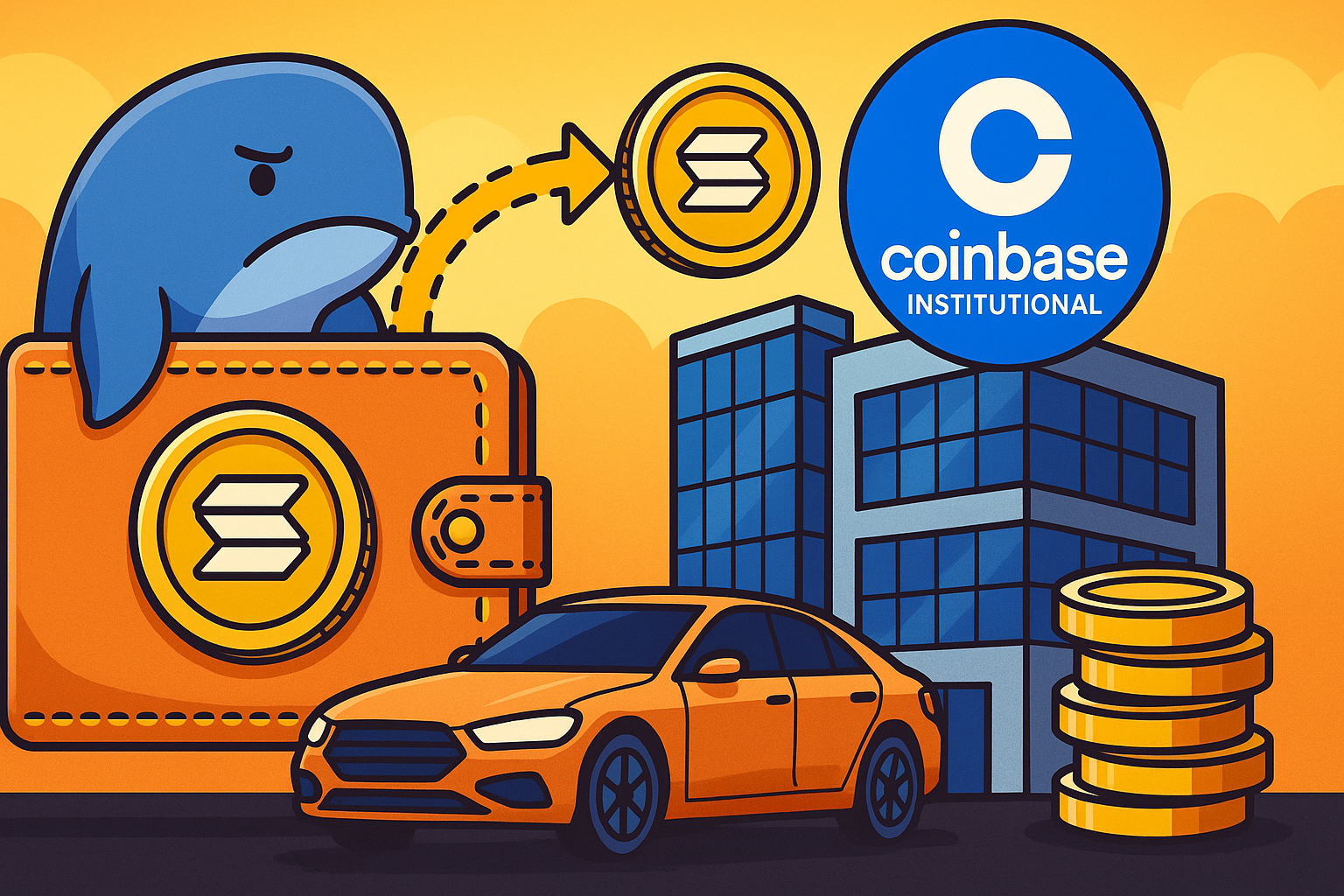
A massive wave hit the crypto markets this week after blockchain tracker Whale Alert flagged a jaw-dropping transaction: 1,660,919 SOL—worth roughly $229 million—was moved from an unknown wallet to Coinbase Institutional. This transfer ranks among the most significant Solana-related institutional movements of the year and has immediately sparked widespread speculation about the motivations behind it.
What Does This Huge SOL Transfer Really Mean?
When hundreds of millions of dollars shift across the blockchain, it’s never just routine bookkeeping. A whale transferring SOL to a regulated institutional platform like Coinbase Institutional usually signals a deliberate, strategic decision.
Such a move could indicate:
- out necessarily triggering immediate selling
Because the destination is Coinbase’s institutional custody arm, the transaction more likely reflects secure long-term holding or staking, rather thStaking intentions, where institutions position assets to earn yield
- Portfolio restructuring, especially for large funds
Preparation for future liquidity, with short-term sell pressure.
Why Whale Transactions Matter So Much
Whales—large holders capable of moving markets—serve as powerful indicators of sentiment and strategy in crypto. A SOL transfer of this magnitude offers valuable clues about how sophisticated players view current market conditions.
Key insights include:
Market Confidence: Moving to custodial storage signals trust in Solana’s long-term value.
Liquidity Effects: Although transferred to an exchange, the SOL may not enter open market circulation.
Institutional Momentum: It highlights Solana’s rising prominence alongside Bitcoin and Ethereum in professional portfolios.
Could This Impact Solana’s Price?
The immediate price reaction to whale activity is often subtle. While selling $229 million in SOL outright could weigh heavily on the price, transferring to Coinbase Institutional suggests a more structured approach.
Historically, large inflows to institutional custodians have:
- Preceded accumulation phases
- Signaled rebalancing, not liquidation
- Coincided with long-term bullish positioning
Retail investors should watch exchange inflows, order book depth, and market liquidity in the days following such events.
A Milestone for Solana’s Institutional Standing
This transfer reinforces Solana’s place among elite blockchain networks. The seamless movement of nearly a quarter-billion dollars demonstrates:
- Network scalability and reliability
- The strength of Solana’s institutional-grade infrastructure
- Growing trust from major financial entities
As more institutions move significant capital into Solana, the ecosystem gains further validation—boosting developer confidence, accelerating dApp growth, and increasing staked value securing the network.
How to Interpret This as a Crypto Observer
To make the most of whale-watching insights:
- Use whale alerts as context, not absolute signals.
- Study broader market flows—is this part of a larger rotation into SOL?
- Focus on fundamentals: Solana’s tech advantages, active developer base, and expanding ecosystem matter far more than any single transfer.
Conclusion
The transfer of 1.66 million SOL is far more than a headline—it’s a strong indicator of crypto’s evolving institutional landscape. Whether the whale is securing assets, preparing for staking, or gearing up for innovative financial products, the sheer scale and destination of the transaction speak volumes about Solana’s growing stature.
In an industry driven by trend shifts and liquidity waves, moves like this highlight how deeply intertwined institutional finance and blockchain networks have become.
Frequently Asked Questions (FAQs)
Q1: What is a ‘whale’ in crypto?
A whale is an individual or entity holding enough of a cryptocurrency to significantly impact its market through buying, selling, or transferring assets.
Q2: Why transfer SOL to Coinbase Institutional instead of regular Coinbase?
Coinbase Institutional provides enhanced custody, OTC trading, specialized support, and regulatory-grade solutions tailored for large investors and funds.
Q3: Does this transfer indicate the whale is about to sell?
Not necessarily. Institutional custody often implies long-term holding, staking, or collateralization—not immediate liquidation.
Q4: How do I track similar large transactions?
Use blockchain explorers like Solscan or alert services like Whale Alert for real-time notifications.
Q5: How is SOL different from Bitcoin?
SOL powers the Solana blockchain—a high-speed, low-cost smart contract network. Bitcoin is primarily a decentralized digital currency optimized for security and scarcity.
Q6: Could this be related to an ETF or institutional product?
While speculative, large transfers to institutional custodians are sometimes associated with fund creation or asset preparation for future financial products. No official link has been confirmed.
Crypto Currency
Vivek Ramaswamy’s Strive Targets $500 Million Raise to Deepen Corporate Bitcoin Strategy

Strive, the publicly traded asset management firm co-founded in 2022 by American entrepreneur and politician Vivek Ramaswamy, has unveiled an ambitious plan to raise $500 million through a new stock offering. The fresh capital is designed to accelerate the company’s Bitcoin-focused treasury strategy—an approach reminiscent of the playbook popularized by Michael Saylor.
In its Tuesday announcement, Strive noted that proceeds from the raise will be used for broad corporate purposes, including purchasing additional Bitcoin, investing in Bitcoin-related financial products, and bolstering working capital. The company also hinted that some funds may go toward acquiring “income-generating assets,” though it has yet to provide further detail on what those investments might include.
Strive Expands Its Footprint as a Leading Corporate Bitcoin Holder
Strive currently holds 7,525 BTC, worth approximately $694 million at today’s prices, placing it among the top corporate Bitcoin holders globally at rank 14. This push into Bitcoin intensified earlier this year when Strive formally transitioned to a Bitcoin-treasury model following a public reverse merger in May. That momentum continued in September when the firm acquired Semler Scientific—a move that significantly boosted Strive’s scale and positioned the combined entity among the heavyweight Bitcoin-holding corporations.
Since rolling out its first ETF in August 2022, Strive Asset Management has rapidly expanded its product lineup and now manages more than $2 billion in assets. Investor enthusiasm appears to be reflecting that growth. Shares of Strive (ASST) closed 3.6 percent higher at $1.02 on Tuesday, more than doubling in value throughout 2024, according to Google Finance.
Strive Pushes for MSCI to Recognize Bitcoin Treasury Companies
In a related development, CEO Matt Cole has called on global index provider MSCI to give market participants the ability to decide whether companies holding substantial Bitcoin reserves should be included in passive investment indexes. MSCI has been reviewing whether Digital Asset Treasury (DAT) companies—firms with balance sheets comprising more than 50 percent crypto assets—should remain eligible for index inclusion.
Cole’s appeal highlights a broader debate in global finance: how should markets classify and present companies whose treasuries are heavily weighted toward digital assets? The firm’s planned $500 million raise further signals Strive’s determination to increase its Bitcoin exposure while shaping ongoing regulatory and index-policy conversations.
With this move, Strive joins a growing wave of publicly traded companies tapping capital markets to accumulate Bitcoin, reinforcing the cryptocurrency’s rising importance in modern corporate treasury strategies.
-

 Crypto3 years ago
Crypto3 years agoCardalonia Aiming To Become The Biggest Metaverse Project On Cardano
-
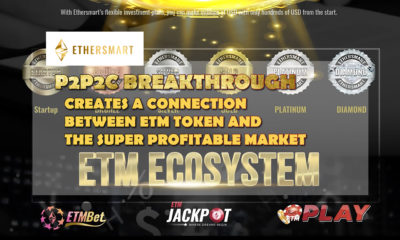
 Press Release5 years ago
Press Release5 years agoP2P2C BREAKTHROUGH CREATES A CONNECTION BETWEEN ETM TOKEN AND THE SUPER PROFITABLE MARKET
-
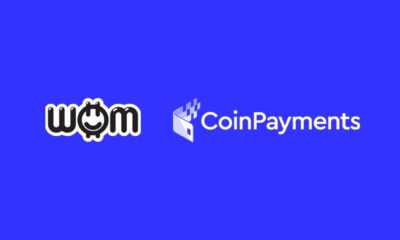
 Blockchain5 years ago
Blockchain5 years agoWOM Protocol partners with CoinPayments, the world’s largest cryptocurrency payments processor
-

 Press Release5 years ago
Press Release5 years agoETHERSMART DEVELOPER’S VISION MADE FINTECH COMPANY BECOME DUBAI’S TOP DIGITAL BANK
-
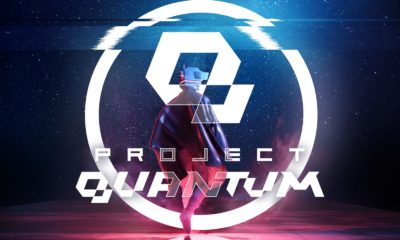
 Press Release5 years ago
Press Release5 years agoProject Quantum – Decentralised AAA Gaming
-

 Blockchain5 years ago
Blockchain5 years agoWOM Protocol Recommended by Premier Crypto Analyst as only full featured project for August
-

 Press Release5 years ago
Press Release5 years agoETHERSMART DEVELOPER’S VISION MADE FINTECH COMPANY BECOME DUBAI’S TOP DIGITAL BANK
-

 Blockchain6 years ago
Blockchain6 years ago1.5 Times More Bitcoin is purchased by Grayscale Than Daily Mined Coins

